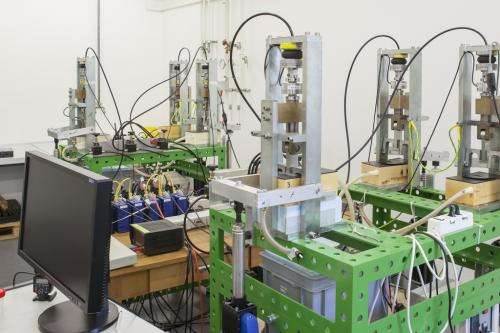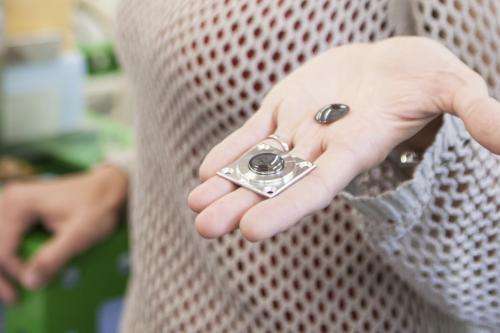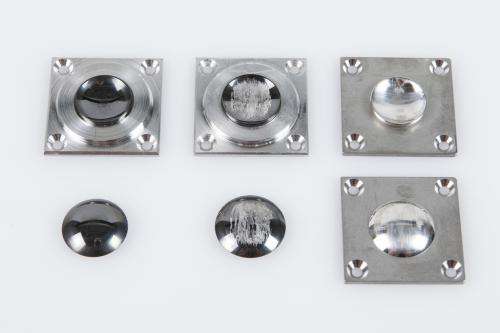New technology for durable spinal disc implants

Artificial joints have a limited lifespan. After a few years, many hip and knee joints have to be replaced. Much more complex are intervertebral disc implants, which cannot easily be replaced after their "expiry date" and which up to now have had to be reinforced in most cases. This restricts the patient's freedom of movement considerably. Researchers at Empa have now succeeded in coating mobile intervertebral disc implants so that they show no wear and will now last for a lifetime.
Due to the daily stresses and movement in the body, even the best artificial joints wear out; the material undergoes wear, and wear particles can trigger unwanted immune reactions, making it necessary to replace the joint. This is normally a standard procedure that can be repeated up to three times with most implants. As bone material is lost each time an implant is explanted, the new joint has to replace more bone and is therefore larger. In the case of intervertebral discs, this is virtually impossible. They are too close to spinal nerves and tissue structures that could be damaged by another operation.
Up to now, intervertebral discs have not been replaced by mobile joints, but by so-called cages, a kind of place holder that both supports and allows the adjacent vertebrae to grow and fuse together. However, this causes stiffening at the point where previously the disc had provided adequate freedom of movement. Over the years, this stiffening can result in the adjacent discs also having to be reinforced due to the increased stress on them. Mobile intervertebral disc implants could reduce this problem. However, many products currently available carry the risk of triggering allergies or rejection reactions due to material abrasion.
What makes artificial joints durable?

Initial attempts to increase the lifespan of artificial joints were made by various manufacturers in the past using a super-hard coating made of DLC ("diamond-like carbon") - with disastrous consequences. Approximately 80% of DLC-coated hip joints failed within just eight years. Researchers at Empa's "Laboratory for Nanoscale Materials Science" investigated this problem and found that the implant failure did not originate from the coating itself, but was caused by the corrosion behaviour of the bonding agent between the DLC layer and the metal body. This layer was made of silicon which corroded over the years, causing it to flake, which led to increased abrasion and, as a result, bone loss. "Our aim was to find a bonding agent which does not corrode and which lasts a lifetime in the body," explains Kerstin Thorwarth.
The first step towards intervertebral discs

This was a laborious task, as the Empa researcher emphasises: "We tried half the periodic table." One was finally found and tantalum was used as the bonding agent. This coating was tested in a so-called total disc replacement - a mobile disc implant. We simulated 100 million cycles, i.e. about 100 years of movement in a specially designed joint simulator. The small intervertebral disc implant held out, remaining fully operational with no abrasion or corrosion. The new bonding agent is soon also to be used in combination with DLC coatings for other joints. "The intervertebral disc is the most awkward joint in terms of implants. Because tantalum has performed so well, the DLC project can now be applied to other joints," says Thorwarth.





















